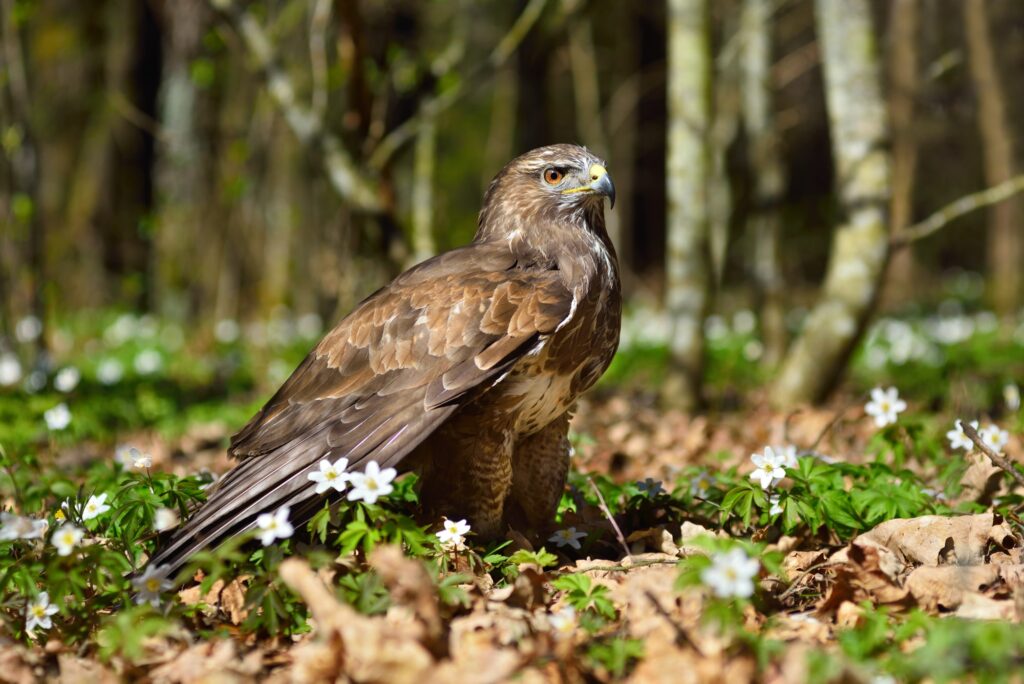If you find yourself in the United States’ Mountain West region and are looking to take in the beauty of nature — and maybe enjoy an adventure or two — then a trip to Utah might be just what the doctor ordered.
The Beehive State is home to the Valley of the Gods, Cedar Mesa, and more…including 462 bird species with 10 of them being hawks, according to the Department of Natural Resources.
Allow us to give you the lowdown on the hawks in Utah so you’ll know what to look for should you find yourself out and about in Utah.
Sharp-Shinned Hawk
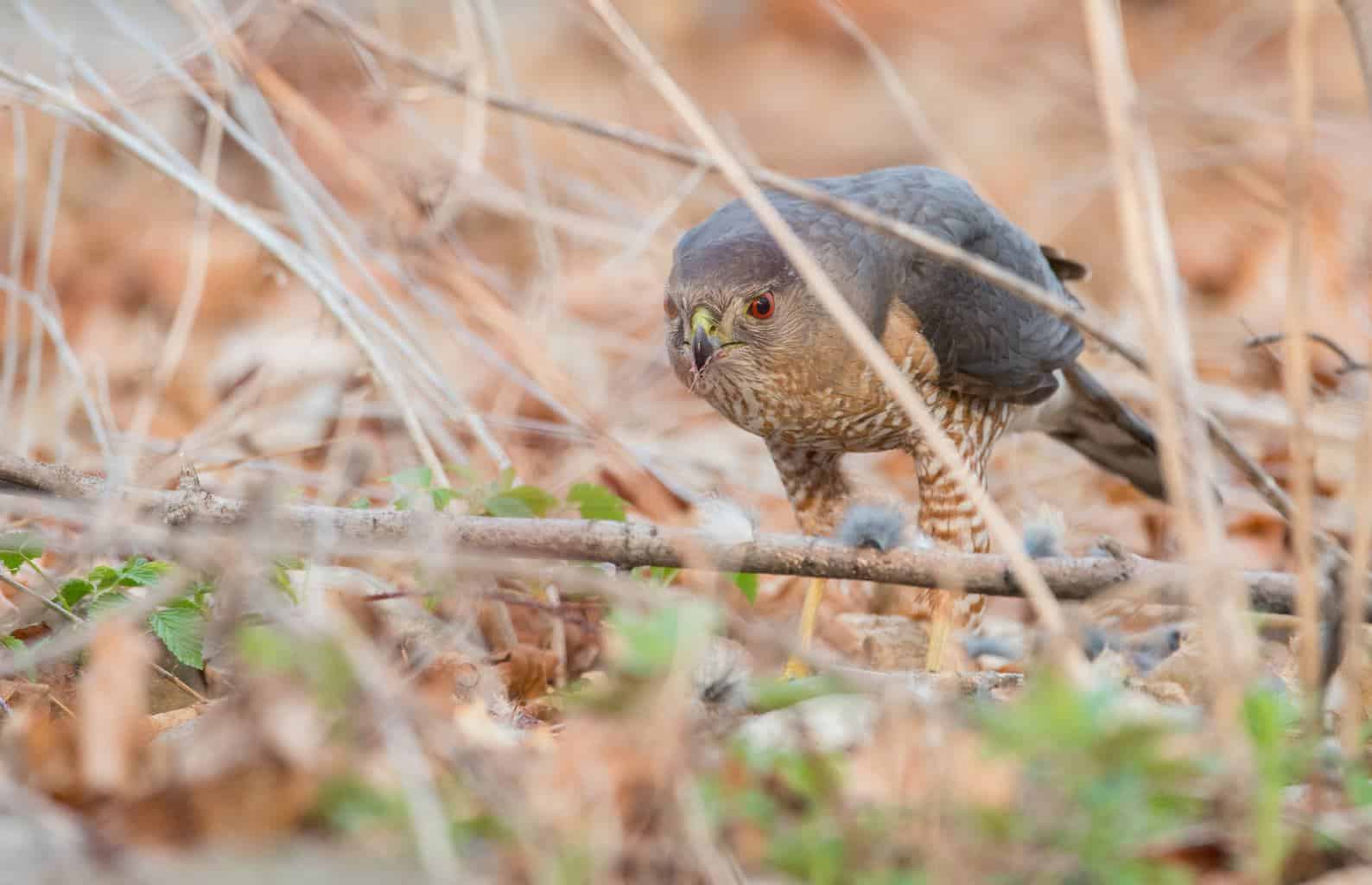
- Scientific Name: Accipiter striatus
- Length: 9.1-11.8 inches (males), 11.3-15.3 inches (females)
- Weight: 0.18-0.25 pounds (males), 0.33-0.5 pounds (females)
- Wingspan: 17-23 inches (males), 23-27 inches (females)
First up in our look at the species of hawks in Utah is the sharp-shinned hawk. These birds of prey are among Utah’s most common species and are known for being not only the smallest hawk in the state but in North America in its entirety.
The tiny hawks are known for hanging around backyard feeders. Despite being small, they’re still dangerous and ready to attack songbirds that stop by your yard, so be careful around them. If you see one of them lurking around, consider taking your feeders down for a few weeks — at least until the predatory birds relocate.
If you’re out on a hike and hope to spot a bird of this species, look for its yellow-orange and white barred breasts and dark blue-gray backs.
Northern Goshawk
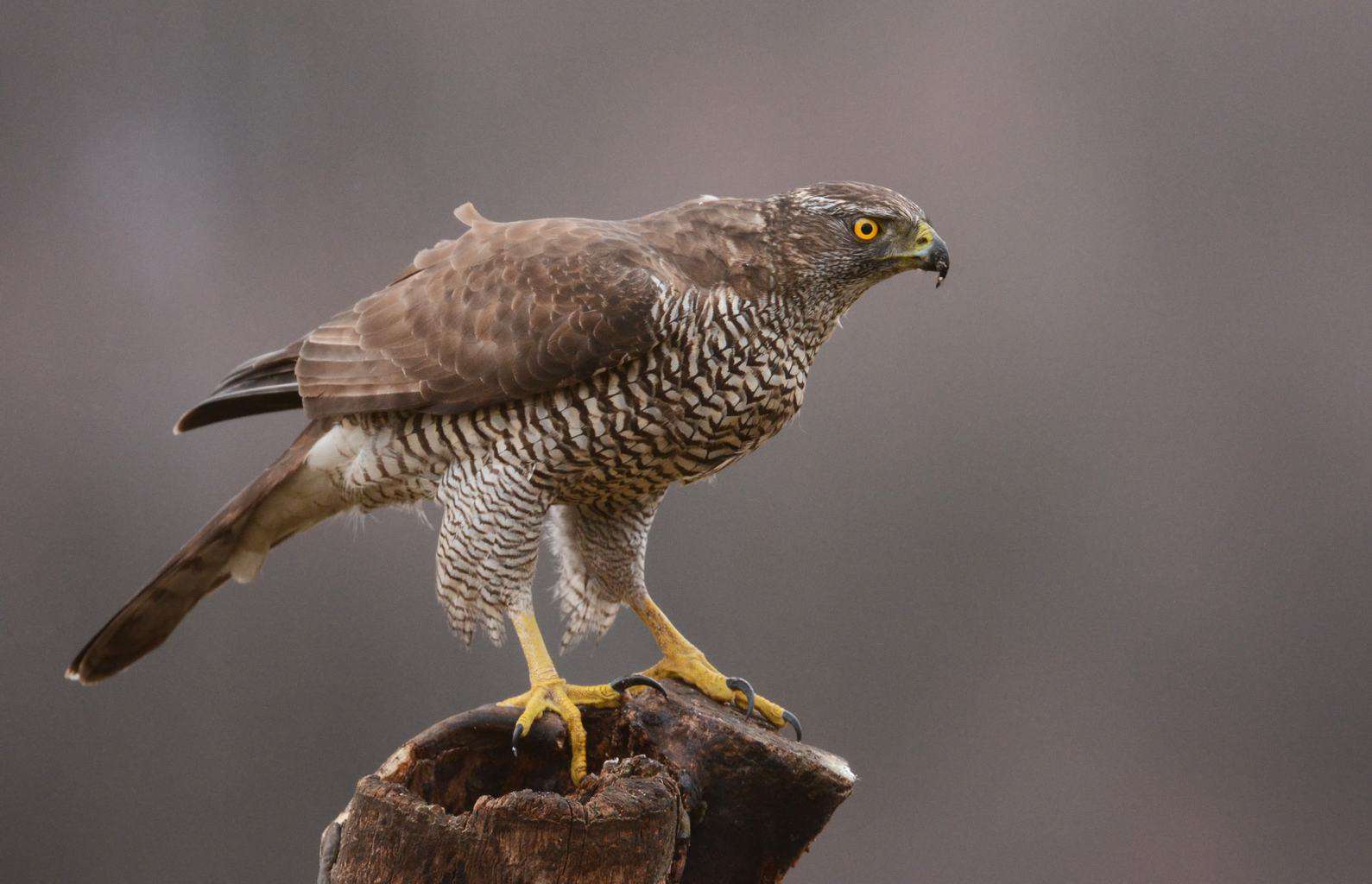
- Scientific Name: Accipiter gentilis
- Length: 18.1-24.4 inches (males), 22.9-27.1 inches (female)
- Weight: 1.5-1.7 pounds (males), 2.4-2.6 pounds (females)
- Wingspan: 34.8-41.3 inches (males), 43.0-50.0 inches (female)
Meet the northern goshawk. This type of hawk can be identified by its exotic matte gray head, bright red eyes, and noticeably white line that runs through its face and swoops backward; it looks kind of like an eyebrow.
Even though they’re the largest of all accipiters, they’re still quite hard to spot. This species is pretty secretive, living only in thickly wooded regions and preferring to keep to themselves. Northern goshawks are also known for being highly territorial, especially when their nests are concerned. So if you stumble across one of these birds at their nest sites, it’s best to keep your distance.
Northern goshawks aren’t particularly picky eaters. They prey on everything from small mammals to other species of birds.
Cooper’s Hawk
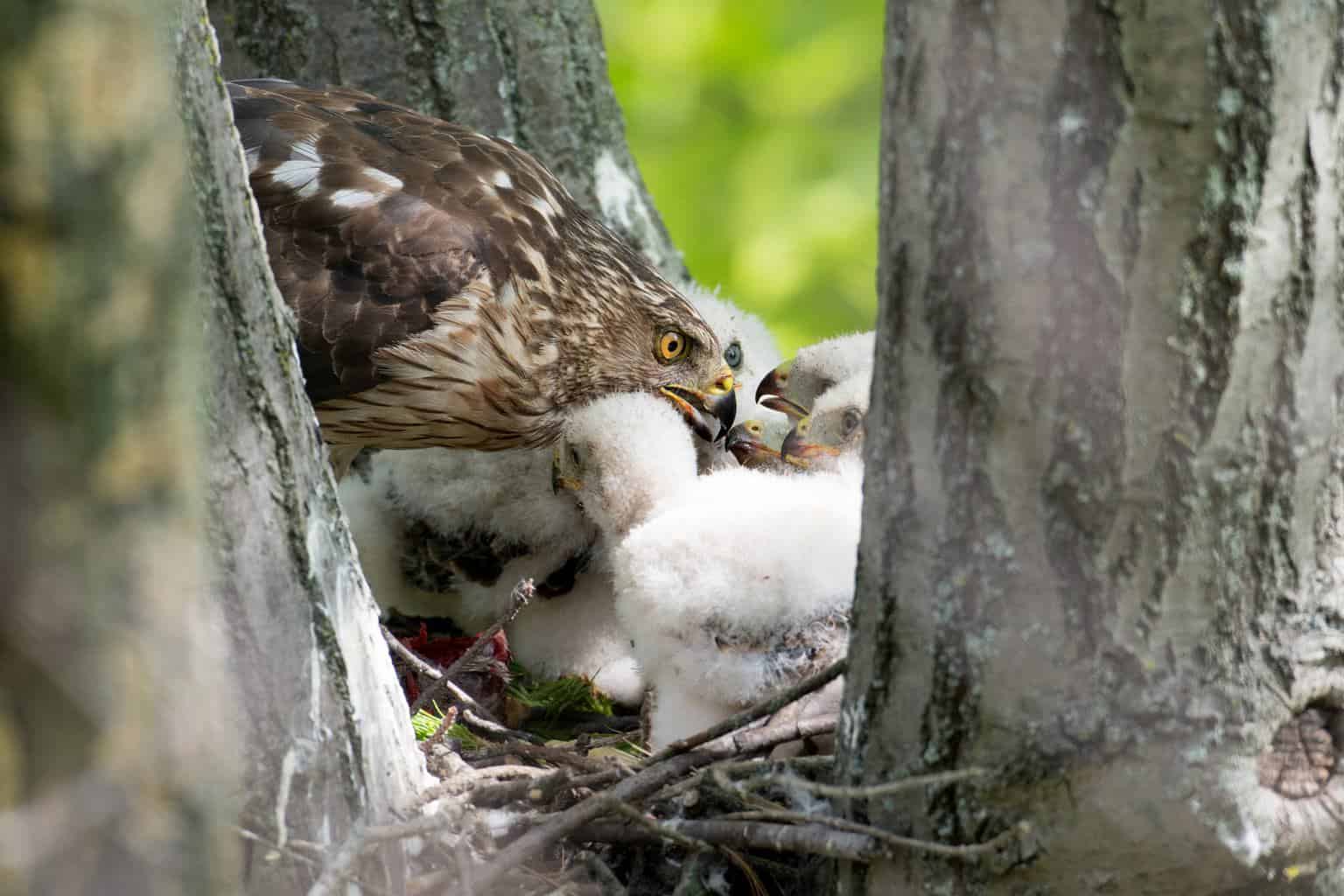
- Scientific Name: Accipiter cooperii
- Length: 14.5-17.7 inches (males), 17-20 inches (females)
- Weight: 0.7-0.9 pounds (males), 1.1-1.3 pounds (females)
- Wingspan: 24.3-38.9 inches
Cooper’s hawks hold a strong resemblance to the sharp-shinned species. However, you can easily recognize them by their larger size and warm reddish bars on their chests.
Cooper’s bird is a medium-sized bird that exhibits sexual dimorphism, which means adult females are larger than males. This species feeds almost exclusively on smaller birds, and for that reason, it’s pretty common for them to lurk around bird feeders to hunt.
When they aren’t in your backyard scouting out their next meal, find this bird of prey deep in wooded habitats.
Rough-Legged Hawk
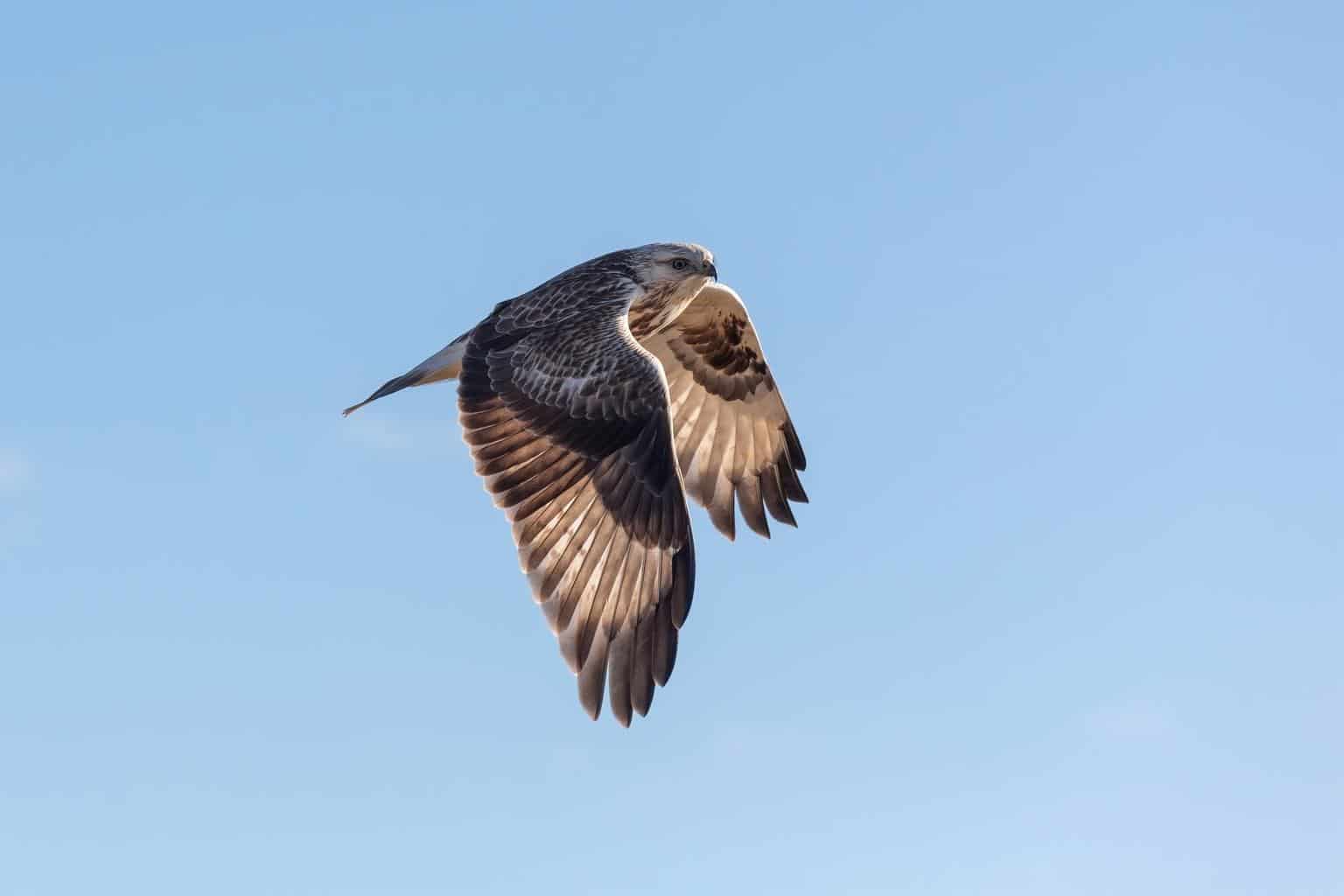
- Scientific Name: Buteo lagopus
- Length: 18.5-20.6 inches
- Weight: 1.57-3.0 pounds
- Wingspan: 52.1-54.4 inches
You’ll find the rough-legged hawk, a migrating species, in Utah during the winter months. It gets its name from its most distinguishing characteristic: the feathers that cover their legs all the way down to their feet.
Rough-legged hawks can also be identified by their mottled appearance and V-shaped wings while they’re flying between utility poles, treetops, and fence posts.
Of all the members of the buteo family, this is the only species that prefer cold weather. It breeds in the arctic tundra, and the layer of feathers on its legs keeps it from freezing in those temperatures.
Ferruginous Hawk
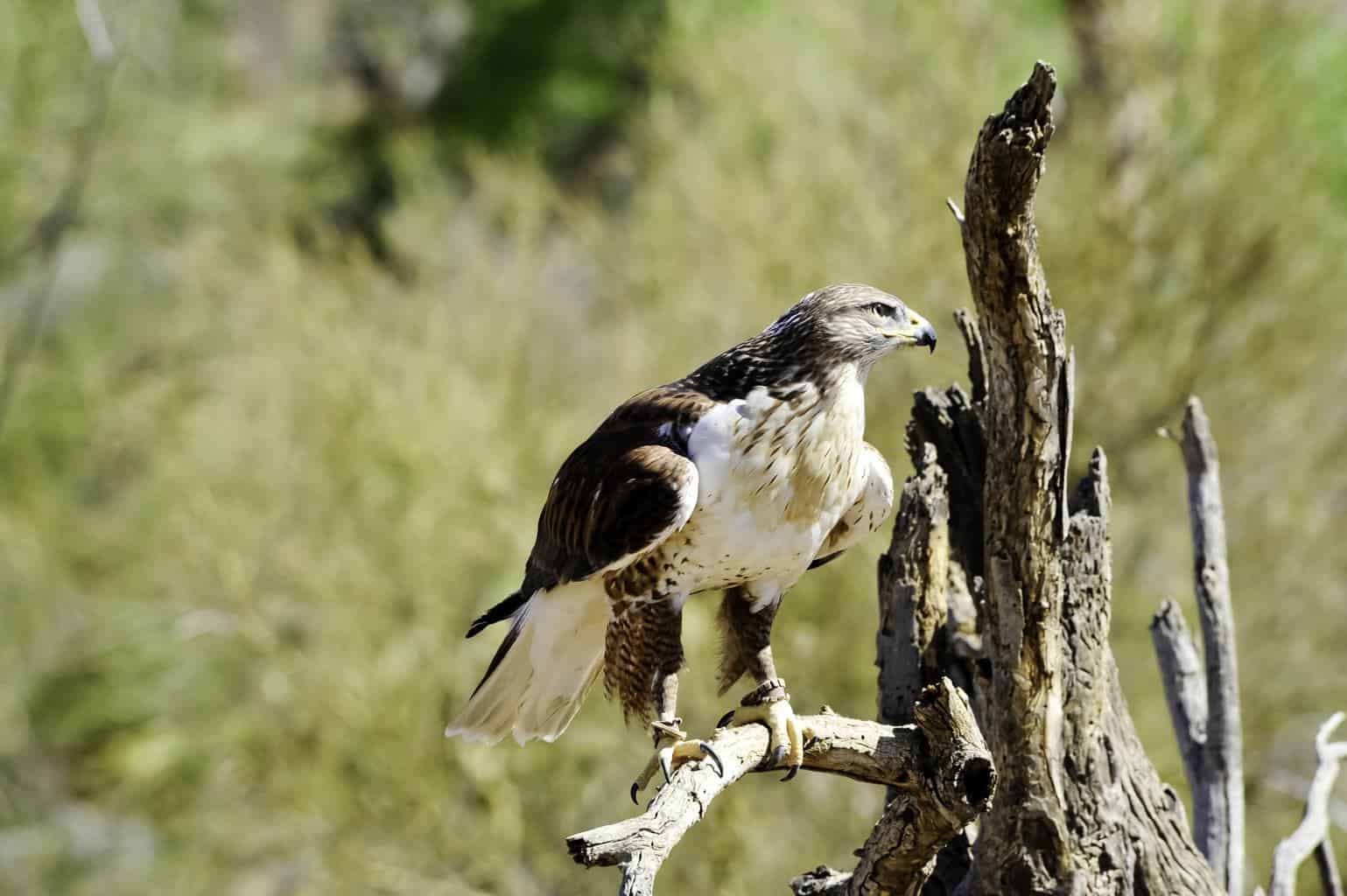
- Scientific Name: Buteo regalis
- Length: 20.0-27.1 inches
- Weight: 1.9-4.9 pounds
- Wingspan: 47.8-60.2 inches
Are you looking for the largest hawk in both Utah and North America? Then look no further than the ferruginous hawk! And you’re in luck; this type of bird is found in abundance in the state because it’s indigenous to the area.
These types of hawks have huge wingspans and unique reddish-brown legs and shoulders. And just like rough-legged hawks, they also sport fully-feathered legs.
You’ll find these raptors preying on small to medium-sized mammals mostly, like jackrabbits and ground squirrels, but they have been known to munch on snakes and large insects, too.
Swainson’s Hawk
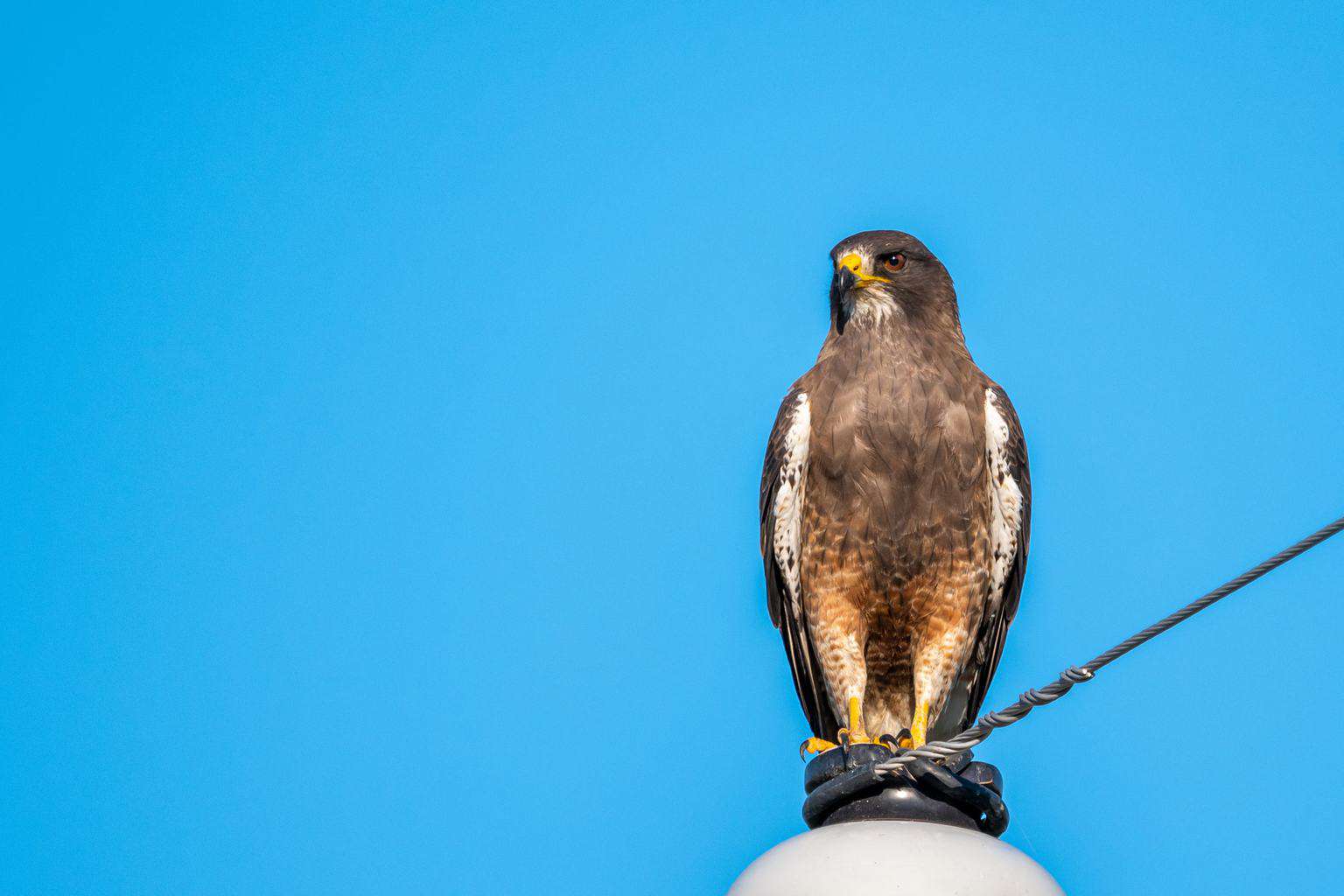
- Scientific Name: Buteo swainsoni
- Length: 17.1-22.1 inches
- Weight: 1.1-3.7 pounds
- Wingspan: 46.3-54.8 inches
Birds of the Swainson’s hawk species are known for their reddish-brown chests that fade to a lighter hue as you follow the feathers toward their bellies and a wingspan that’s very long in comparison to the length of their bodies.
This graceful bird feeds mainly on larger insects, like grasshoppers, and has one of the longest migration ranges of all the raptors. They migrate in large flocks to Uruguay and Argentina in the fall. Their migrations occur in large groups called kettles, and experienced birders look forward to seeing them every year; they gather in well-known spots in the U.S., Mexico, and Central America to watch this species fly by.
Red-Tailed Hawk
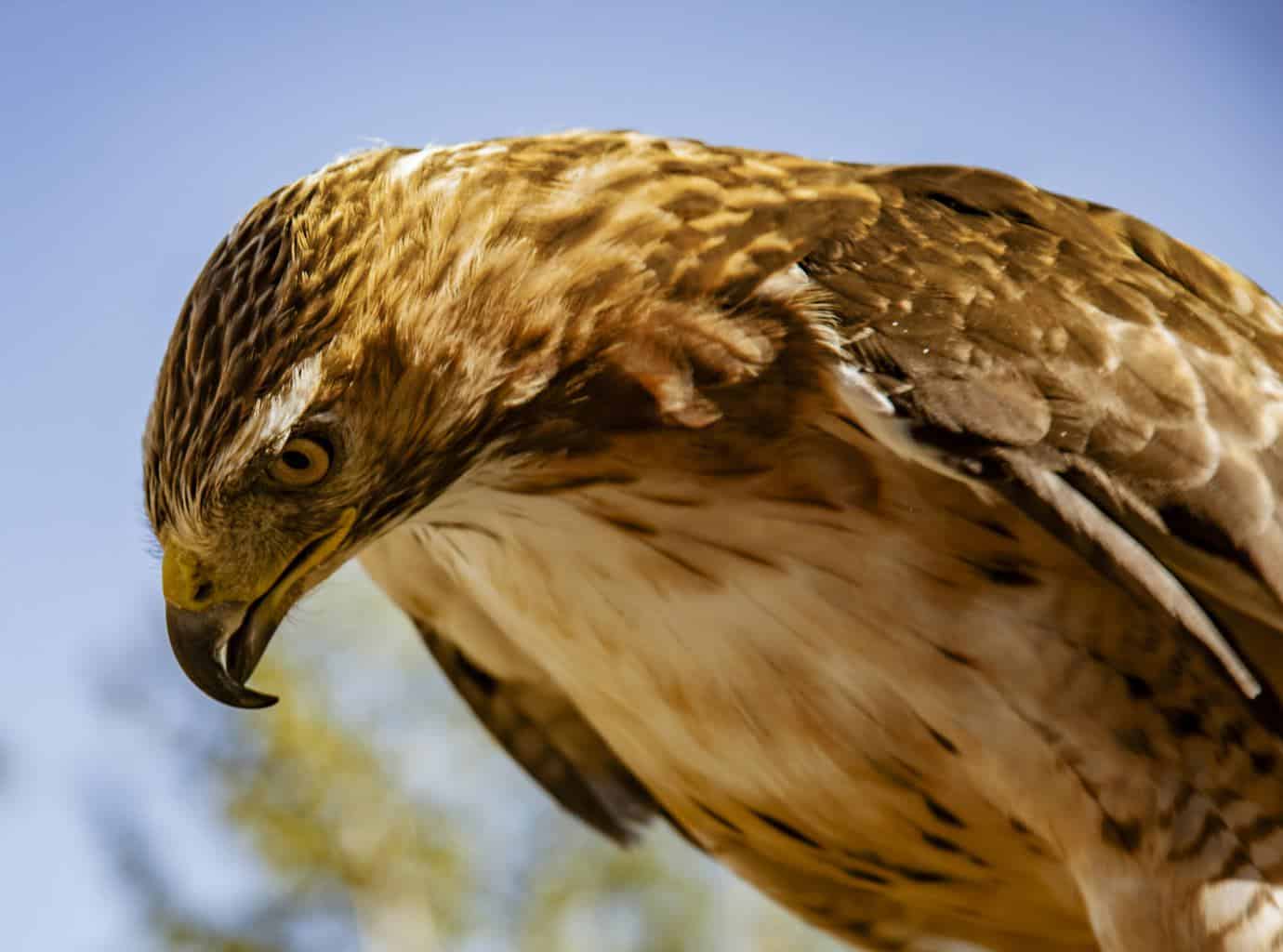
- Scientific Name: Buteo jamaicensis
- Length: 17.7-26.1 inches
- Weight: 1.5 to 3.5 pounds (females are 25 percent heavier than males)
- Wingspan: 44.5-52.5 inches
Catching a glimpse of the red-tailed hawk won’t be too hard. This species is found all over the state of Utah, and over 95 percent of the world’s population of these birds is found in North America.
Red-tailed hawks boast the standard buteo characteristics — rounded broad wings and a short wide tail — but what really makes these common hawks stand out is a distinctive cinnamon-red tail.
These hawks enjoy a varied diet, including small mammals, like voles, rats, and rabbits, reptiles, and other species of birds.
Broad-Winged Hawk
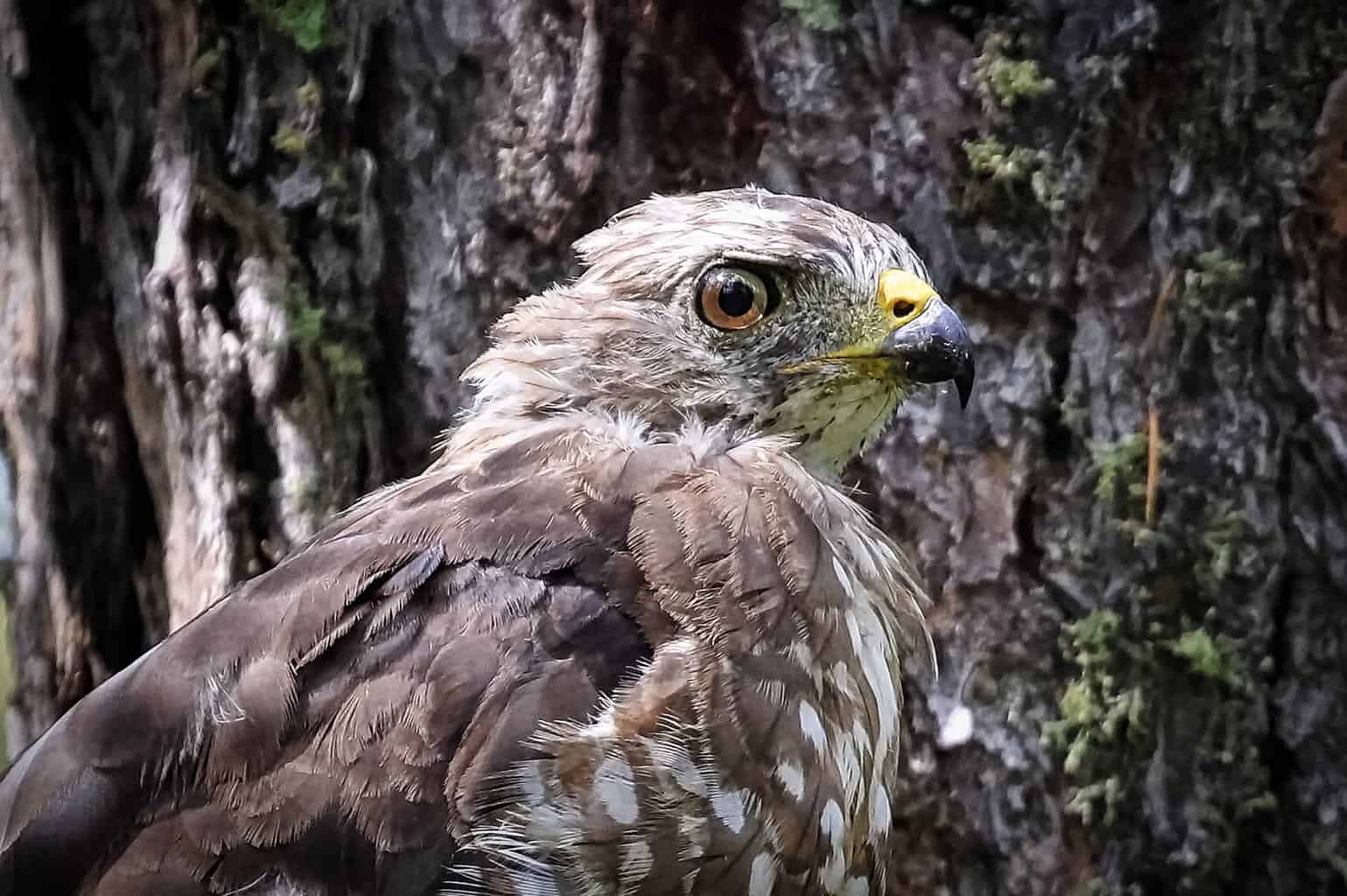
- Scientific Name: Buteo platypterus
- Length: 13.4-17.3 inches
- Weight: 0.6-1.2 pounds
- Wingspan: 31.9-39.4 inches
The broad-winged hawk is a piercingly loud and highly protective medium-sized hawk. You’ll recognize them by their broad wings, but they also have a thick banded tail that makes them easy to spot.
It’s quite easy to find this species if you’re in Utah during the winter. However, they migrate to the midwest to mate in the summer.
These buteo birds like to spend their days underneath the forest canopy hunting small animals like mice, voles, and ground squirrels, but when they’re available, they’ll also eat amphibians, large insects, and occasionally fish.
Red-Shouldered Hawk
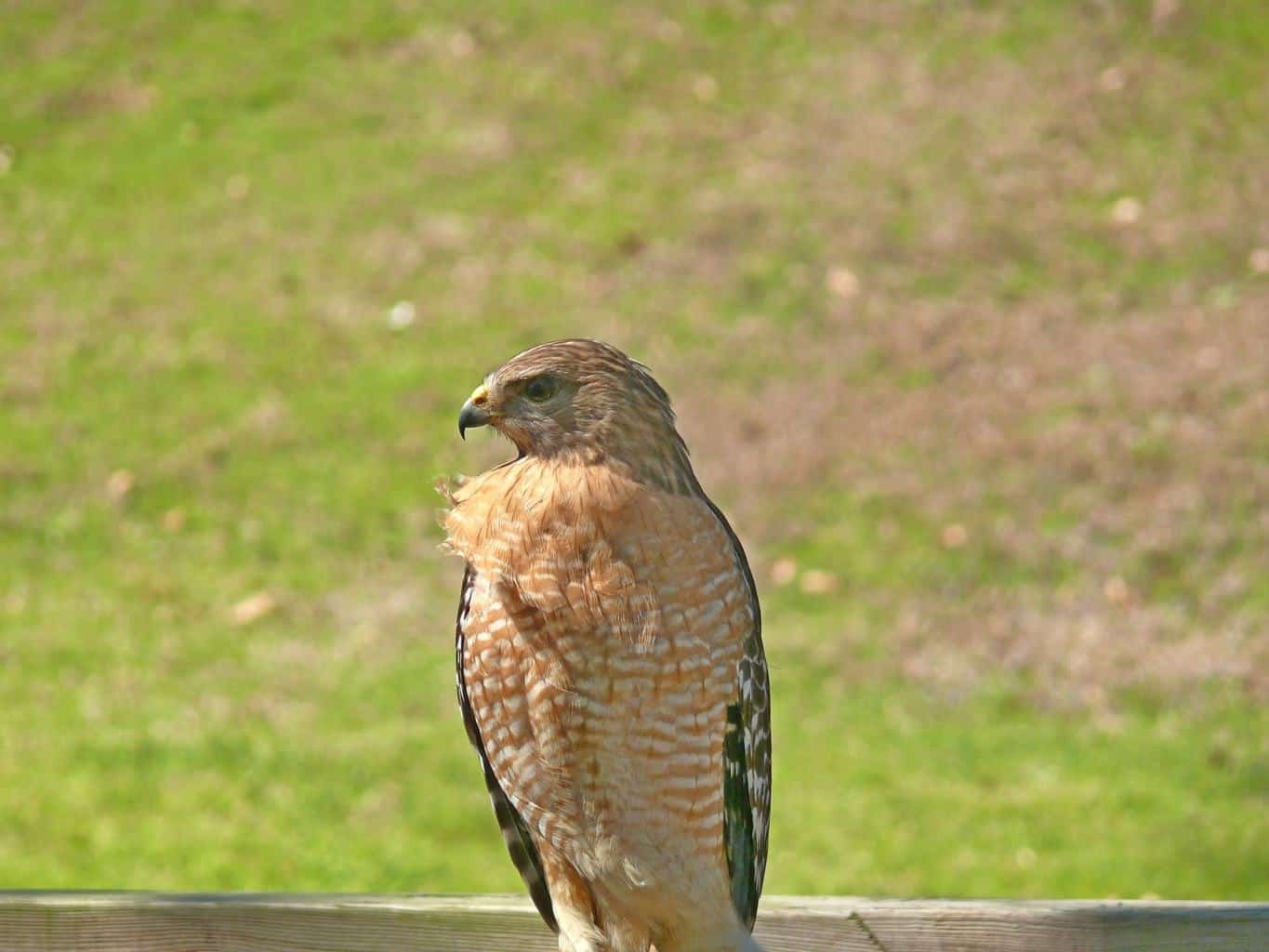
- Scientific Name: Buteo lineatus
- Length: 16.8-24.1 inches
- Weight: 1.0-1.7 pounds
- Wingspan: 36.9-43.7 inches
Red-shouldered hawks are known for the rusty bars on their chests and the black and white checkers on their wings. Juveniles of this species have brown backs and stomachs that are white with brown streaks.
If you’re on a birdwatching adventure in Utah, you’ll find these birds spending time in deciduous wooded areas, usually those near swamps and rivers. They’ll likely be hunting for amphibians and reptiles to eat, but their diet shifts depending on where they are and the time of year. They may feed on snakes, small birds, or crayfish if they’re available.
Zone-Tailed Hawk
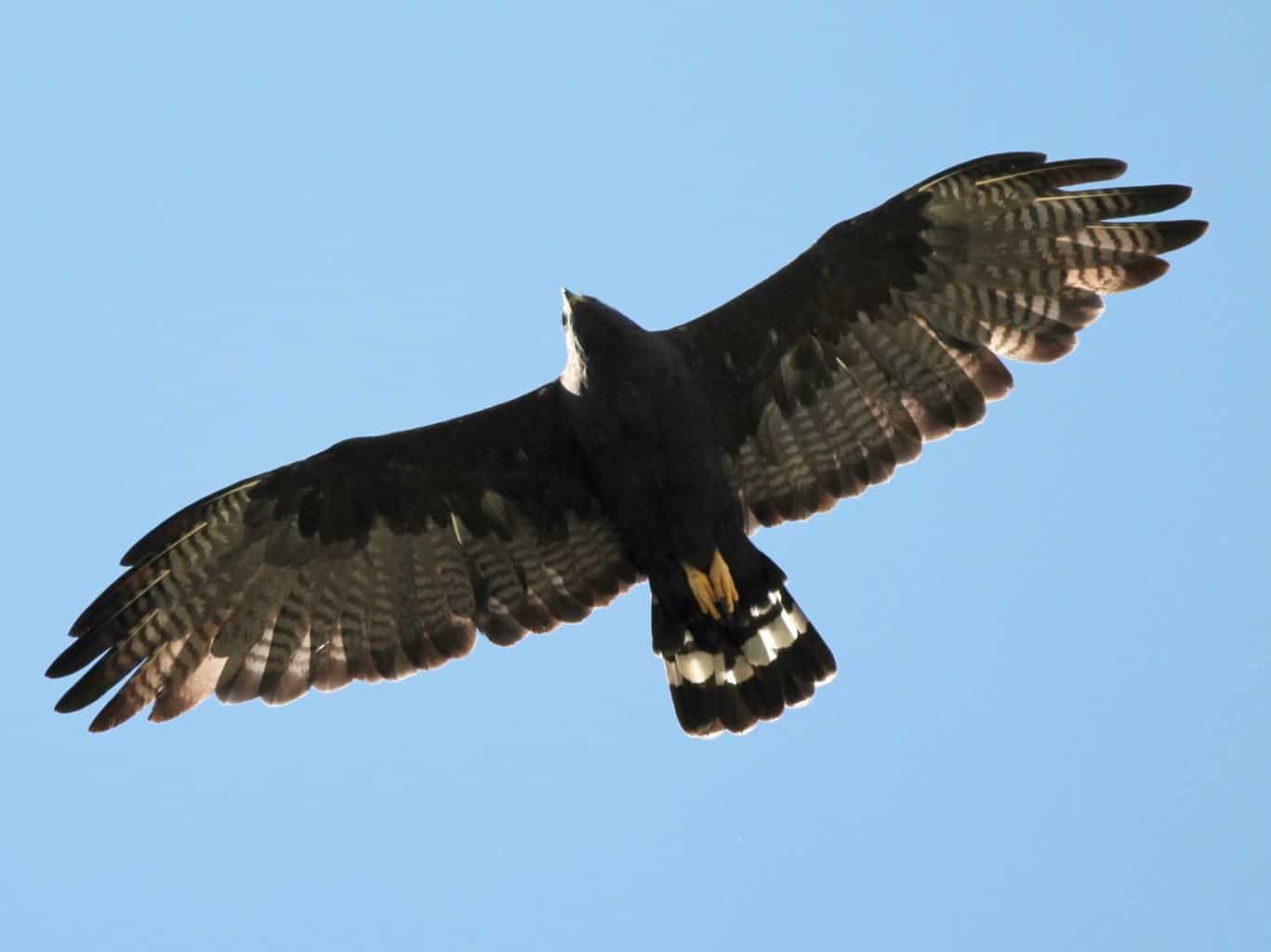
- Scientific Name: Buteo albonotatus
- Length: 18.2-21.2 inches
- Weight: 1.2-2.3 pounds
- Wingspan: 46-55.1 inches
The zone-tailed hawk species is one of the most adaptable in this region of the United States. So, despite being an occasional bird that isn’t regularly found in Utah, you just might stumble across one of them while birdwatching.
One of the easiest ways to identify birds of this species is its all-black body; it gives the impression of a “hawk-sounding crow.” The undersides of its wings are black and white striped, which looks a bit like those of the turkey vulture.
As far as diet is concerned, these birds mostly prefer to eat lizards, specifically spiny or collared ones, small mammals, and other birds.
Wrap Up
Now that we’ve reached the end of our list of hawk species in Utah, it’s time to plan your trip! While you’re enjoying the national and state parks in the Beehive State, remember to bring your binoculars so you can take a gander at some of the most wonderful hawks in America.

